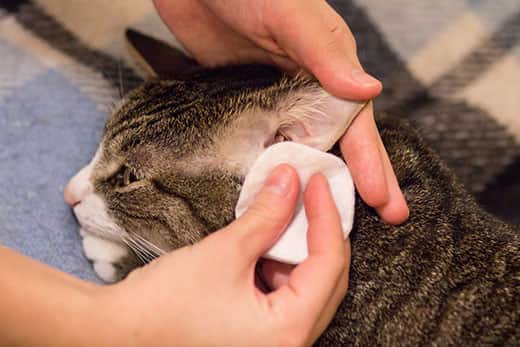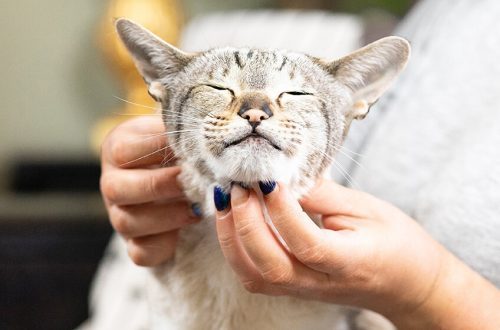
Do I need to clean my cat’s ears?
The sensitivity of a cat’s ears is several times higher than that of a human. Therefore, a clean and healthy hearing organ is important for the comfortable life of your furry pet. A small buildup of earwax is normal for a healthy cat. It prevents dust, hairs and other particles from entering the middle ear. But if too much sulfur accumulates and plugs form, or otitis media (inflammation) develops against the background of pathogenic microflora and ear mites, then the cat will need additional care. It is your responsibility to take care of keeping the cat’s ears clean.
Are cats’ ears cleaned?
A cat needs proper ear hygiene just like a human. How often you need to clean the ears of an animal depends on its breed, health status, etc.
Preventive cleaning should be carried out as the ear canal and auricle become dirty. In a lop-eared cat, the ear canal gets dirty faster than in a cat with erect ears. This feature is distinguished, for example, by cats of the Scottish Fold breed. There are also breeds that lack hair on the inside of the ear. The accumulation of sulfur occurs even more intensively in sphinxes, devon rexes, elves. Such pets sometimes need to clean their ears every few days.
How to properly clean your cat’s ears
Every owner should know how to clean the ears of a cat at home. For this procedure, he needs to prepare the following materials and equipment:
- Towel for fixation.
- Any ear cleaner from a veterinary pharmacy recommended by a veterinarian. Chlorhexidine and hydrogen peroxide can irritate the ear canal.
- Cotton swabs, discs or soft wipes. Experts do not recommend the use of cotton swabs.
It should be understood how to deeply clean the ears. Without visual control, you can accidentally injure the delicate auditory organ. Therefore, to begin with, carefully fix the cat’s head. Put 2-5 drops of lotion first in one ear and then in the other. Massage the base of each of them so that the liquid is evenly distributed over the auricle and ear canal. Let the animal dust itself off and shake its head. Then, using a cotton swab, gently remove the accumulated dirt and wax on the visible part of the auricle and on the initial part of the ear canal. All movements should not be strong and directed outward. After cleaning, stroke your fluffy beauty, treat her with a treat or your favorite food. The whole process takes a few minutes. If you brush your cat’s ears gently and regularly, she will get used to it and won’t fight back.
If you notice that your pet has a discharge from the ears with an unpleasant odor, brown spots or black plaque, then this indicates a disease. When a cat’s ear is leaking, you can’t clean it yourself – you need to immediately take it to the veterinarian. He will examine the ear, assess the condition of the ear canal and tympanic membrane, see under a microscope if there are mites, bacteria or yeast-like fungi in the ear canal, and prescribe the appropriate treatment.





